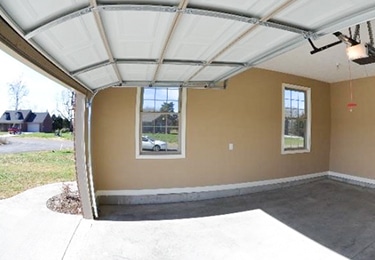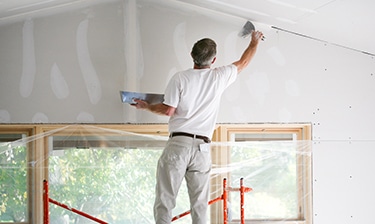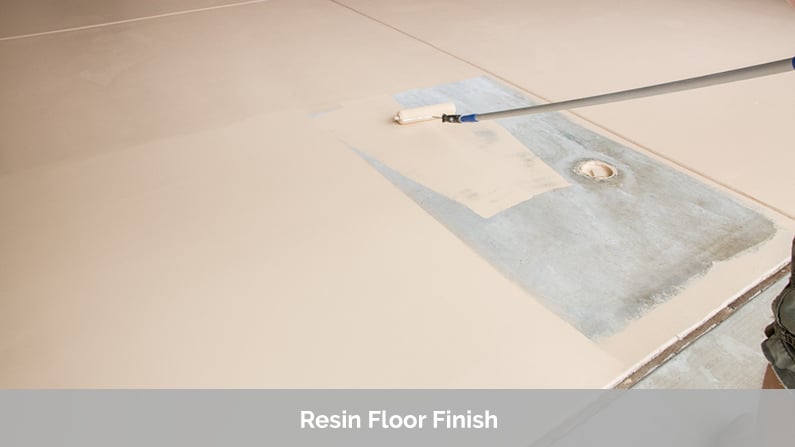Your garage is a sanctuary, a true place that you can make your own. A lot of homeowners like to transform their garages into offices, workout spaces, large tool sheds, crafting stations, and much more. No matter what you use your garage for, odds are you want it to look good.
At Tool Nerds, we love finding new ways to get creative. Whether you have background experience as a painter, or you are just beginning, we wanted to give you a few tips that you can follow when painting your interior garage.

Don’t be overwhelmed by the prospect of painting the interior as a daunting task. You probably have the walls of your garage lined with tools, hooks, equipment, furniture, and much more. You’re going to have to move it out of the way before you begin. While this may seem like too big of a chore, don’t worry – it will all be done fairly quickly! Plus, the results will be worth it as well.
Think about painting the floors and the ceiling of your garage as well. This isn’t just about the walls! For a full transformation, make sure you have all angles considered.
If you’ve finally decided to give your garage a new and updated look, follow this guide and follow the steps to successfully painting your interior garage. From cleaning, to organizing, to painting, your garage will look as good as new in no time.
Before You Begin

Before you start working on your interior garage, you need to consider what items you’re leaving in, and which items you’re taking out. It may be beneficial to make a checklist of items that you want to remove or leave before you get started.
Ask yourself the following questions:
1. Will my items be okay if left outside for extended periods of time? You don’t want to risk having some of your valuable furniture or metal tools stuck out in the open for too long. They can risk damage due to the elements, or rust due to rain.
2. Do I have safety concerns with leaving them outside? You want to make sure that you can leave your items out safely without risking theft. Objects like bicycles or other valuable pieces of equipment should be left in a safe and secure spot. You never know when someone is looking to steal valuable possessions.
3. Do I have a storage facility or spare room where I can keep my items? You need to make sure you know where you have the extra space before you start moving items in. Be sure that you can transport your items as well. A storage space, a guest room, or even a friend’s house (if they’re nice enough) are all great places to temporarily house your items.
After you’re done figuring out where to move your items to, it’s time to start the process of moving them out completely. Take your valuable possessions to a safe location. Keep some of the more durable products outside. Move your equipment to a shed where they won’t be touching the interior of the garage.
Then, once everything is cleared and you’re left with an empty garage,
you can start the next steps of the interior painting process.
Look for Damages and Repair Needs Before you Wash your Garage
It is vital that you do not start the painting preparation process until every crack and hole in your garage is repaired. This means scouring your drywall, floor, and ceilings for any signs of damage or disrepair. You need to take care of these simple fixes before you can start painting. Otherwise, you’ll be left with a poor paint job and several exposed and dangerous spots in your garage.

Once you have removed everything from your garage, you can cover holes and cracks using a drywall compound. You can find drywall compound on Amazon or at any local hardware store for your convenience.
Use this to cover up your holes and cracks in the drywall. If there are holes and cracks in the ceiling or floor, look for the appropriate compound solution to fill them with.
They are often not made of drywall.
It is essential that you wait for the repairs to dry before cleaning your interior space. It may be tempting to want to powerwash the garage right away, but you must wait for all substances to be dry before you can apply water to it.
After everything is dry, you can move on to the power washing process. Using a hose or a power washer, carefully and thoroughly wash your walls, floor, and ceiling to get rid of any dirt or debris. This is an essential step to complete before you start painting.
Start with the Ceiling, then the Walls
Starting with the ceiling is the most logical place to begin, as you don’t need to worry about waiting for it to dry before moving on to the other surfaces of your garage. In other words, you can paint the ceiling first and wait for it to dry while you paint the walls and floor of the garage.
First, you should start with a base coat. This rule applies to both the ceiling and the walls. We recommend using a paint roller for the ceiling, as a paint sprayer often cannot reach up at those angles. Plus, a paint roller will be easier to spread across the ceiling and will likely cause less of a mess.
When choosing a type of paint that works best for your garage, there are several crucial details that must be confirmed. First, consider your base paint type. If it’s an alkyd or oil-based paint, you may use a latex water-based paint on top of it.
However, you cannot put an alkyd paint on top of a latex base coat. This is a rule that must be acknowledged before starting your project, or else your garage will become too exposed to water damage and other forms of disrepair.
Choosing colors is another thing. A lighter paint color will open up the room and make your garage feel more expansive, since it invites in natural light and gives you a sense of spaciousness. On the other hand, a darker color, such as gray or blue, gives natural beauty and is also great for covering up eventual dirt stains.
Move on to the Floor
First, wait for your walls to dry! You don’t want your floor washing and painting process to destroy the beautiful work you’ve just done on your walls and ceiling. Since the floor requires an extra cleaning step before you start painting, it’s essential that all other parts of the garage are done and completely dried first.
You likely have a concrete floor in your garage. This will make it easy to clean, but there are a few specific things you must do:
- Invest in a degreaser for your floor. Since you park your cars on the garage floor all day long, the tires and leaky oil spots tend to build up a lot of grease. You can find a degreaser online or at the stoor. Just make sure to wear protective gloves before you begin work on this step.
- Wash the floor with water and bleach. A solution of three parts water for one part bleach will work perfectly to get out oil stains and to remove other dark and unwanted spots.
- Get a patching compound to fix cracks in the floor. We mentioned this earlier – get something that will easily stick to the cement and patch up those cracks. Then, get a grinder to smooth out those areas.
- Polish everything. Once the compounds are dry, the floor is smoothed, and the surface is washed, you should polish the floor of your garage. You can find floor polishers like the Hilway Direct PLUS Floor Finish & Cleaner HD-P133 on Amazon for a complete look. Be sure to invest in a polishing device, such as a scrub brush or even a full machine.
- Apply a resin finish. This can be found in the form of paint or even a 100% acrylic sealant. A resurfacer is the best choice to give your floor the protective coating it needs. This will help it stay shiny and immaculate for years to come.

Remember to wait 24 hours before painting. This is how long it takes for some of those sealant and crack repair products to dry. You won’t want to risk damaging the hard work you’ve put into your floor!
We recommend a 100% acrylic paint for your garage floor. If you want to use epoxy paint to make it shiny and glossy, you need a catalyst in order to successfully paint the floor with it. Keep in mind that epoxy paint dries extremely fast – typically within 45 minutes of the coat being applied.
Your Work is Complete!
After you’ve removed your items, thoroughly cleaned your floors, painted the ceiling and walls, scrubbed and polished the floor, and applied your final coats of paint, you are complete with your beautiful DIY project. We cannot stress this enough: Wait for everything to dry before putting your items back in the garage.
You can start to move your items in and put them in the locations you desire. Once your job is complete, you can admire your beautiful and brand-new paint job for many, many years. You should be proud of yourself – you painted every surface of your garage!
The post Painting Your Interior Garage appeared first on Tool Nerds.
from Tool Nerds http://ift.tt/2s2mvf4
via IFTTT
No comments:
Post a Comment